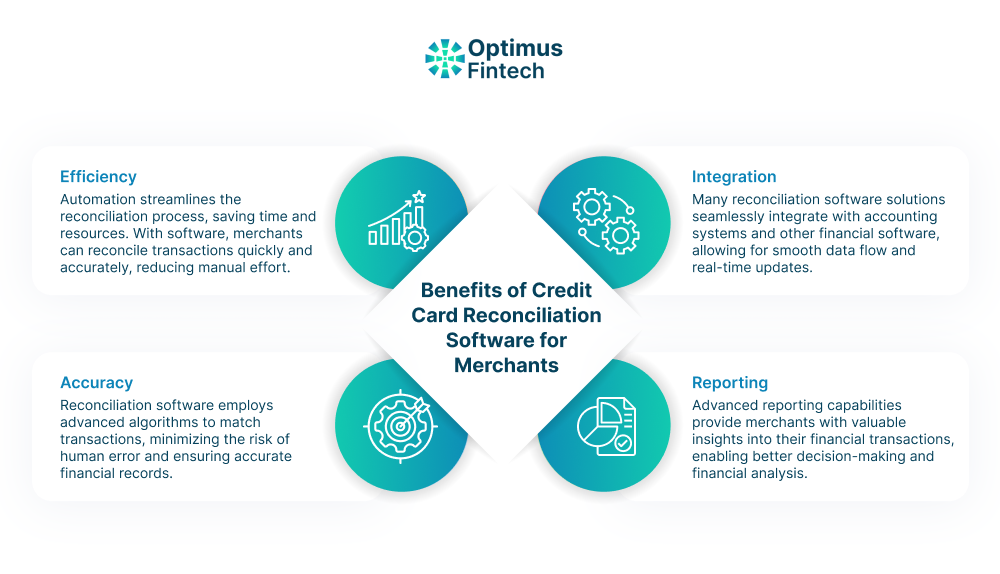Credit Card Reconciliation
The Ultimate Credit Card Reconciliation Checklist for Merchants
Explore the comprehensive checklist that merchants need to streamline credit card reconciliation processes, prevent discrepancies, and ensure financial accuracy.

Amrit Mohanty
Apr 23, 2024 (Last Updated: Nov 13, 2025)

Effective management of credit card transactions is crucial for merchants to maintain financial health and ensure accuracy in their records. However, the manual reconciliation process can be time-consuming and prone to errors. Fortunately, with the advent of credit card reconciliation software, merchants can streamline this process and minimize the risk of discrepancies. In this comprehensive guide, we will explore the importance of credit card reconciliation, explore the benefits of using reconciliation software, and provide a detailed checklist to optimize your credit card reconciliation process.
Importance of Credit Card Reconciliation
This essential process involves comparing credit card transactions with associated bank statements to confirm accuracy and identify inconsistencies. It holds crucial importance in merchants' financial management for several reasons, such as
- Compliance: Proper reconciliation ensures compliance with industry regulations and accounting standards, crucial for financial transparency and integrity. Failure to comply can lead to penalties. Regular reconciliation assures stakeholders of adherence to standards, providing confidence to investors, creditors, and regulatory bodies.
- Financial Control: Credit card reconciliation enhances financial control by providing insight into cash flow, expenses, and revenue. It allows merchants to monitor spending patterns, identify areas of overspending or inefficiency, and make informed decisions to improve financial performance. Additionally, reconciling credit card transactions helps prevent unauthorized expenses or duplicate payments, ensuring that financial resources are used effectively and efficiently.
- Budgeting and Planning: Accurate reconciliation of credit card transactions facilitates budgeting and financial planning processes. By having a clear understanding of expenses and revenue, merchants can develop realistic budgets, set financial goals, and allocate resources strategically. Reconciliation data also enables businesses to analyze trends, forecast future cash flows, and make proactive adjustments to their financial strategies.
- Auditing and Reporting: Reconciliation of credit card transactions provides a trail of financial activities that can be used for auditing purposes. Auditors rely on reconciled transaction data to verify the accuracy of financial statements and ensure compliance with auditing standards. Furthermore, reconciled records serve as supporting documentation for financial reports, tax filings, and other regulatory disclosures, enhancing transparency and credibility.
- Risk Management: Effective credit card payment reconciliation is an essential component of risk management strategies for merchants. By promptly detecting discrepancies or irregularities in transaction records, businesses can mitigate the risk of financial losses due to errors, fraud, or compliance violations. Proactive reconciliation practices help identify potential risks and vulnerabilities in financial processes, allowing businesses to implement controls and protection against them.
Comprehensive Reconciliation Checklist for Merchants
To optimize your credit card reconciliation process, here is comprehensive checklist:
Gather Documents
- Collect all relevant documents for the reconciliation period, including credit card statements, receipts, invoices, and other transaction records.
- Systematically organize these documents to facilitate the reconciliation process.
Match Transactions
- Verify transaction dates, amounts, and merchant names by cross-referencing to ensure precise matching.
- Utilize reconciliation software or tools to match credit card transactions with corresponding entries in bank statements.
Example: Suppose your credit card statement shows a transaction for $100 at a restaurant on April 15th. Check your accounting records to ensure that there's a corresponding entry for this expense. Compare the transactions listed on the credit card statement with those in your accounting records. Ensure that each transaction on the statement has a corresponding entry in your records
Verify Transaction Details
- Thoroughly examine each transaction to verify that key details, including amounts, dates, and merchant names, match between credit card statements and receipts.
- Check for any discrepancies or anomalies that may require further investigation.
Example: Say you discover a duplicate charge for $50 on your credit card statement. Upon reviewing your sales records, you realize that the customer was accidentally charged twice for the same purchase. You promptly issue a refund for the duplicate charge and update your records to reflect the corrected transaction. So, verifying transaction details and reconciling credit card statements helps to identify discrepancies and take appropriate actions to maintain accurate financial records.
Investigate Discrepancies
- Promptly investigate any discrepancies or irregularities identified during the reconciliation process.
- Traceback transactions to their source to identify any errors, unauthorized charges, or fraudulent activities.
- Communicate with relevant parties, such as vendors or financial institutions, to resolve discrepancies efficiently.
Example: A Retail store finds differences in transaction dates between their system and the credit card statement for online orders. Investigation reveals the credit card company processes online transactions on a different schedule, causing timing discrepancies. The business adjusts its reconciliation process to accommodate these variations and ensures accurate transaction date reconciliation.
Record Adjustments
- Make necessary adjustments to reconcile discrepancies and ensure accurate financial records.
- Document all adjustments made during the reconciliation process, including reasons for the adjustments and any supporting evidence.
- Ensure proper authorization and approval processes for adjustments, especially for significant discrepancies.
Example: After contacting the vendor, you discover that the $100 you thought was charged extra was really for a legitimate purchase that was accidentally not recorded in your system. You enter the transaction into your records. Make any necessary changes to your records to match them with the credit card statement. This could include updating missing transactions, fixing errors, or disputing fraudulent purchases with your credit card issuer.
Reconcile Regularly
- Establish a regular schedule for credit card reconciliation to maintain financial accuracy and compliance.
- Reconcile credit card statements based on transaction volume and business requirements, whether weekly, bi-weekly, or monthly.
- Adhere to internal policies and industry regulations regarding the frequency of reconciliation to prevent errors and ensure timely detection of discrepancies.
Review Controls and Processes
- Periodically review and enhance internal controls and reconciliation processes to strengthen financial management practices.
- Implement segregation of duties to prevent fraud and errors, ensuring that different individuals are responsible for initiating, approving, and reconciling transactions.
- Conduct training sessions for employees involved in the reconciliation process to enhance their understanding of best practices and compliance requirements.
Monitor Trends and Patterns
- Analyze trends and patterns in credit card transactions to identify potential areas of improvement or risk.
- Utilize data analytics tools to extract valuable insights from transaction data, such as spending trends, recurring charges, and outlier transactions.
- Monitor key performance indicators related to the reconciliation process, such as reconciliation accuracy rate and time taken to resolve discrepancies, to track progress and identify areas for optimization.
Benefits of Credit Card Reconciliation Software for Merchants
Credit card reconciliation software offers numerous benefits for merchants, streamlining the process of matching credit card transactions with bank statements and enhancing overall financial management. Here are some key advantages:

- Efficiency: Automation streamlines the reconciliation process, saving time and resources. With software, merchants can reconcile transactions quickly and accurately, reducing manual effort.
- Accuracy: Reconciliation software employs advanced algorithms to match transactions, minimizing the risk of human error and ensuring accurate financial records.
- Integration: Many reconciliation software solutions seamlessly integrate with accounting systems and other financial software, allowing for smooth data flow and real-time updates.
- Reporting: Advanced reporting capabilities provide merchants with valuable insights into their financial transactions, enabling better decision-making and financial analysis.
Summary
Accurate credit card reconciliation, especially aided by credit card reconciliation software, is essential for maintaining financial integrity, detecting fraud, and ensuring compliance with regulations. This technology streamlines the reconciliation process, minimizing errors and improving overall efficiency. Furthermore, it aligns credit card transactions with corresponding bank statements, offering valuable insights into financial trends and patterns.
A comprehensive checklist serves as a crucial tool in this process. It helps merchants identify and rectify discrepancies promptly, thereby strengthening financial controls and mitigating risks associated with inaccurate or fraudulent transactions. By systematically reviewing transaction data, fees, and chargebacks, businesses can maintain a robust reconciliation framework that fosters transparency and accountability in their financial operations.

